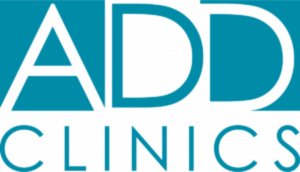ADD is often presented as a condition characterized solely by distraction or hyperactivity, but the reality is much more nuanced.”
GULFPORT, MS, UNITED STATES, December 13, 2024 /EINPresswire.com/ -- Attention Deficit Disorder (ADD), a neurological condition affecting millions of individuals, is often misunderstood and misrepresented in media portrayals. Popular culture frequently reduces ADD to oversimplified stereotypes, creating misconceptions that can impact public perception, diagnosis, and treatment. These portrayals risk trivializing the lived experiences of those with ADD and hinder efforts to foster understanding and support.— Dr. Stanford Owen
Dr. Stanford Owen, owner of ADD Clinics in Gulfport, Mississippi, highlights the need for more accurate representations in the media. “ADD is often presented as a condition characterized solely by distraction or hyperactivity, but the reality is much more nuanced. These portrayals can lead to misunderstandings about the condition’s complexities and its impact on daily life.”
Common Media Stereotypes
Media depictions often frame ADD as a lack of focus or motivation, ignoring the wide range of symptoms and challenges associated with the condition. Characters with ADD are frequently shown as impulsive, lazy, or perpetually distracted, reinforcing harmful stereotypes that diminish the seriousness of the condition.
Another common trope is the idea that ADD only affects children, with little acknowledgment of the significant number of adults living with the condition. These portrayals contribute to the misconception that ADD is something individuals outgrow, rather than a condition that persists and evolves over a lifetime.
Impact on Public Perception
The stereotypes perpetuated by the media can shape public attitudes, leading to stigma and judgment toward those with ADD. These misconceptions may cause individuals to dismiss the challenges faced by those with the condition, reducing empathy and understanding. For example:
Minimization of Challenges: Simplistic portrayals may lead people to believe that ADD is merely a personality trait rather than a legitimate medical condition.
Barriers to Diagnosis: Media-driven misconceptions can discourage individuals from seeking help, as they may fear being labeled or misunderstood.
Negative Self-Perception: Individuals with ADD may internalize these stereotypes, contributing to feelings of inadequacy or shame.
Dr. Owen emphasizes that such portrayals can have real-world consequences. “When ADD is trivialized in the media, it can discourage individuals from seeking treatment and support. The stigma created by these depictions can make it more difficult for individuals to access the resources they need.”
Encouraging Accurate Representations
To combat stereotypes, media creators must prioritize accuracy and inclusivity in their portrayals of ADD. This includes consulting with medical professionals and individuals with lived experience to ensure authenticity. By presenting nuanced characters and storylines, the media can help to normalize the condition and promote understanding.
Realistic representations of ADD should address the full spectrum of symptoms, including difficulties with executive functioning, time management, and emotional regulation. These portrayals can illustrate the strengths and resilience of individuals with ADD, while also acknowledging the challenges they face.
Educating the Public
Public education plays a critical role in addressing misconceptions about ADD. Raising awareness about the realities of the condition can counteract the stereotypes often seen in the media. This includes:
Highlighting the Science: Explaining the neurological basis of ADD helps dispel the myth that it is simply a matter of willpower or effort.
Sharing Personal Stories: Real-life accounts from individuals with ADD can provide valuable insights into the condition and its impact.
Promoting Resources: Directing individuals to reputable sources of information ensures they can learn about ADD in an accurate and supportive context.
Dr. Owen underscores the importance of community engagement in fostering understanding. “Changing the narrative around ADD requires collective effort. Accurate information, combined with compassion and awareness, can help reduce stigma and support those affected.”
A Path Forward
Media platforms have a unique opportunity to shape public understanding of ADD. By moving beyond stereotypes and embracing complexity, creators can play a vital role in breaking down misconceptions and promoting inclusivity. Accurate portrayals not only validate the experiences of those with ADD but also encourage society to view the condition through a more compassionate lens.
The work to address ADD stereotypes in the media is ongoing. Efforts to educate the public, advocate for representation, and promote understanding are essential in creating a culture where individuals with ADD feel seen and supported.
Morgan Thomas
Rhino Digital, LLC
+1 504-875-5036
email us here
Visit us on social media:
Facebook
Legal Disclaimer:
EIN Presswire provides this news content "as is" without warranty of any kind. We do not accept any responsibility or liability for the accuracy, content, images, videos, licenses, completeness, legality, or reliability of the information contained in this article. If you have any complaints or copyright issues related to this article, kindly contact the author above.



